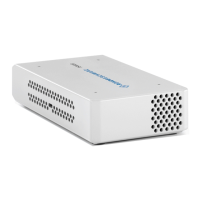Troubleshooting
R&S
®
TSME6
65User Manual 4900.0033.02 ─ 08
●
Jumbo Frames (9 kB) supported (see "Does the host provide a Gbit LAN connector
and support 9k jumbo frames?" on page 65)?
●
Max. 5 R&S TSME6 devices connected to one adapter?
●
USB2LAN realized via USB3.0 (see "Are you using a USB2LAN adapter?"
on page 66)?
●
Firewall settings: Application permitted access?
If the R&S TSME6 does not show normal function after these measures, contact R&S
support.
Remarks to the software checks
For "full auto-IP" and "partial auto-IP" mode, the following hints are valid:
●
R&S TSME6 IP addresses are unique and physically in the network range
(169.254.0.0 netmask 255.255.0.0).
●
In "full auto-IP" mode, the user has no control on the IP addresses physically used.
** If the application using R&S TSME6 is not running as administrator, the following
problems are possible:
●
The static ARP table conflicts with the dynamic configuration of R&S TSME6.
Clean up the ARP table or run the application as administrator to verify if the con-
figuration is working.
●
The host (respectively R&S TSME6) is not able to send and receive a multicast
frame to IP address 239.192.1.5 port 16962.
The following information provides further solutions to frequent connection problems.
Does the host provide a Gbit LAN connector and support 9k jumbo frames?
Sometimes the Windows network adapter properties show that 9k is enabled, but in
fact the adapter does not support the setting. You can check this using this command:
netsh interface ipv4 show interfaces
The "MTU" value in each line indicates the maximum transmission unit. Make sure the
LAN adapter connected to the R&S TSME6 supports an MTU larger than 9000.
If the 9k jumbo frames cannot be enabled in the Windows dialog box, try the following
command:
netsh interface ipv4 set subinterface [Idx] mtu=9000
store=persistent
[Idx] is the network ID of the LAN adapter.
Guide to solve instrument connection problems

